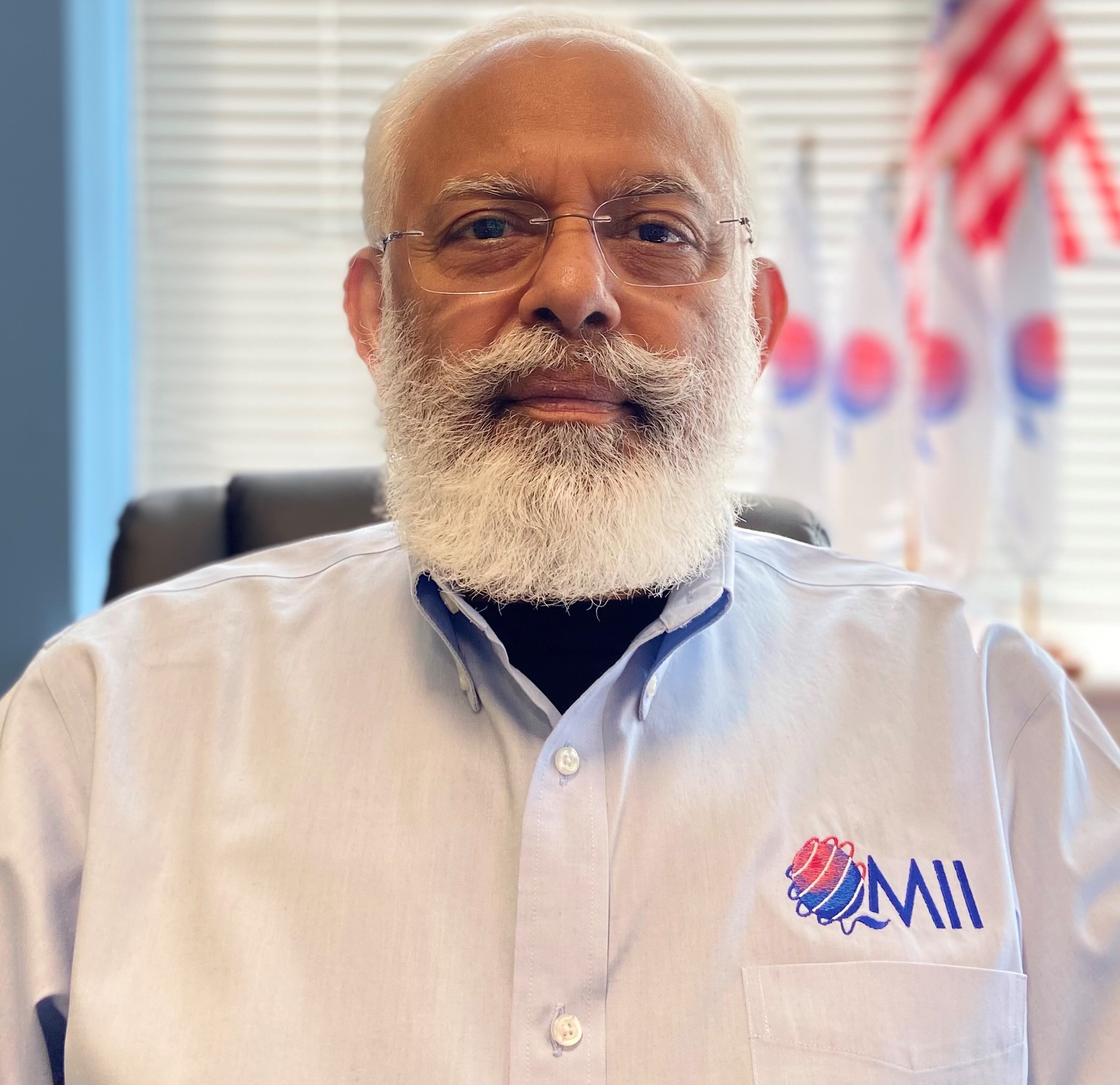by Dr. IJ Arora
ISO 13485:2016 is a standard that addresses quality management system requirements for those within the medical device industry. It is based on the systems-based approach found in ISO 9001:2015, but because it emphasizes requirements for regulatory purposes, it does not align with ISO’s harmonized structure (HS). In many ways, ISO 13485 does align with the HS, particularly in the structure and foundational principles of quality management.
The introduction of ISO 13485 explicitly states that the standard is aligned with ISO 9001, and this connection is important for understanding how the two standards relate to each other. I am a bit surprised as to why ISO 13485 isn’t fully harmonized with the HS as defined in Annex SL, which is the specific document within ISO standards that outlines the HS. I believe that if this standard were aligned to the HS, it would make implementation much less laborious for all involved.
The ISO 9001 foundation
The 2015 version of ISO 9001, which is presently under revision, provides a good basis for all standards. As mentioned, ISO 13485 has its roots in ISO 9001, which is why the key QMS principles (e.g., customer focus, leadership, process approach, continual improvement, and evidence-based decision making) central to ISO 9001 are also embedded in ISO 13485.
ISO 13485 includes several core concepts and clauses from ISO 9001. Clause 4 on quality management systems (e.g., structure, documentation requirements, and the scope of the QMS); cause 5 on management responsibility (e.g., top management involvement, resource allocation, and internal audits); and clause 8 relating to measurement, analysis, and improvement (e.g., monitoring, corrective actions, and continual improvement), are just some of these examples.
As I study, teach, consult, and audit using ISO 13485, I wonder why the standard Is not fully harmonized with similar standards as laid out in Annex SL. In consulting, I feel the pain of organizations that must meet regulatory requirements and so tend to overlook the process-based management system (PBMS) approach as the fundamental to the plan-do-check-act (PDCA) cycle. This regulatory focus is one reason why, although ISO 13485 shares many similarities with ISO 9001, it is not fully aligned with the HS. ISO 13485 places a strong emphasis on compliance with regulatory requirements specific to the medical device industry. The standard’s clauses addressing design and development, post-market surveillance, risk management, and traceability requirements are all far more extensive than those found in ISO 9001. Annex SL focuses more on general management practices and less on industry-specific regulatory controls. The detail and specificity required for medical device safety and compliance often necessitates a structure that goes beyond the framework of the HS.
Overcoming differences
Different scopes and audiences are also a consideration in that, while ISO 9001 is a general quality management standard applicable across industries, ISO 13485 is designed specifically for organizations that manufacture medical devices. These organizations must meet stringent regulatory requirements that go beyond what ISO 9001 addresses. Because of this, ISO 13485 requires more detailed processes related to product lifecycle management, post-market activities, risk management, and regulatory controls, which aren’t adequately covered under the more generalized HS. ISO 13485 includes a much stronger emphasis on managing the product’s entire lifecycle, from design and development to post-market activities (e.g., complaint handling and vigilance). Although ISO 9001 mentions product realization, ISO 13485 goes into much greater depth, including extensive requirements for design control and risk management. These elements reflect the higher level of scrutiny needed in the medical device industry, where safety and compliance are paramount.
With that said, I believe that these differences don’t prevent ISO 13485 from being organized according to the HS format. The standard would not only help medical device manufacturers’ management systems conform with specific regulatory requirements but also meet the obligations for continual improvement. After all, registered organizations in the aerospace and automobile industries already do just that via sector-specific management system standards that are harmonized with ISO 9001.
The structural differences in the clauses found in ISO 13485 and the standards adopting the HS are not too far apart. Although ISO 13485 is aligned with ISO 9001, it diverges when it comes to specifics that are unique to the medical device sector and regulatory requirements.
ISO 13485’s clause 7, “Product Realization” includes additional elements, such as design controls and regulatory compliance requirements, that are critical in the medical device industry. Post-market surveillance and complaint handling are central to ISO 13485, but the HS doesn’t go to the level of detail necessary for medical device manufacturers.
ISO 13485 emphasizes the need for continuous monitoring of device performance, even after they are on the market, ensuring any issues are identified and addressed in a timely manner. I believe ISO 9001’s subclause 9.1.2, “Customer Feedback,” can be updated to incorporate this requirement.
Risk management is a vital consideration. ISO 13485 integrates risk management into the standard in a way that is far more structured and pervasive than what is found in ISO 9001. ISO 13485 has a more detailed approach to identifying, assessing, and mitigating risks throughout the lifecycle of medical devices. However, these added requirements could be added to subclause 6.1.1 (““Actions to Address Risks and Opportunities”) or subclause 8.1.1 (“Operation Planning and Control”) found in the HS.
ISO 13485 includes specific requirements for design and development processes, which are critical in medical devices due to their complexity and potential risk to patient safety. The HS doesn’t provide this level of detail for other types of products or industries.
Identifying similarities
Notwithstanding the differences between ISO 13485 and the standards that align with the HS, there are also some key similarities. As with ISO 9001, ISO 13485 is built around seven quality management principles: customer focus, leadership, engagement of people, process approach, improvement, evidence-based decision making, and relationship management. Continual Improvement of the quality management system is part of both standards, emphasizing the need for a strong focus on monitoring, auditing, corrective actions, and reviews. Document control is another similarity. Both ISO 13485 and ISO 9001 stress the importance of clear and accurate documentation to ensure that quality management processes are defined, monitored, and maintained effectively.
In keeping itself separate from the HS, ISO 13485’s clause structure, despite being based on ISO 9001, serves to meet the unique needs of the medical device industry. The decision not to fully harmonize the standard with the structure seen in Annex SL likely stems from the need to ensure a tailored regulatory focus. ISO 13485 is aligned with a variety of regulatory frameworks across different countries and regions (e.g., FDA, EU MDR, TGA, etc.). These regulations require specific processes that go beyond the generic, high-level harmonized framework provided by Annex SL to facilitate combined/ integrated management systems. The structure of ISO 13485 allows for a more detailed, industry-specific approach to product safety, efficacy, risk management, and compliance. Product lifecycle control is an essential part of the medical device industry, and it has a complex lifecycle that includes design controls, manufacturing processes, and post-market activities that require more attention than the HS would provide.
Looking at a few additional clauses reveals that ISO 13485 follows a specific structure that allows it to emphasize the unique aspects of medical device quality management while maintaining consistency with other ISO standards.
For example, Clause 1, “Scope,” is relatively straightforward and outlines the scope of the standard, which is specific to organizations that design, manufacture, and maintain medical devices. The clause also highlights exclusions (for example, aspects not applicable to the organization), which is quite typical in a quality management standard.
Clause 2, “Normative References,” lists the documents referenced within ISO 13485, which is typical for any ISO management system standard. The important point here is that ISO 13485 requires compliance with relevant regulations and standards, particularly those in the medical device sector.
Clause 3, “Terms and Definitions,” is crucial because the terminology in the medical device industry can be very specifically. Definitions clarify terms that might have different meanings in other industries (e.g., what qualifies as a “medical device,” “design verification,” or “post-market surveillance”). This ensures uniformity and understanding across the industry.
Clause 4, “Quality Management System (QMS),” describes the basic requirements for establishing and maintaining a QMS, which is a fundamental aspect of ISO 13485. This clause outlines the need for a quality policy, the establishment of objectives, and the requirement to continually improve the QMS. These are common in all ISO standards but are tailored here to fit the needs of the medical device industry.
Clause 5, “Management Responsibility,” covers executive involvement as a key theme. In ISO 13485, it emphasizes top management’s responsibility for ensuring that quality objectives are met. This clause also requires that management provide resources for quality activities and review the performance of the QMS regularly, ensuring alignment with regulatory requirements and customer needs.
Clause 6, “Resource Management,” could have been aligned to clause 7, “Support,” found in the HS. This clause in ISO 13485 requires the organization to manage resources effectively, which includes personnel training and competence (a critical area in the medical device industry). This ensures that employees have the skills needed to produce safe and effective devices. It also covers infrastructure and the control of the work environment, ensuring that conditions are suitable for maintaining product quality.
Clause 7, “Product Realization,” diverges further from the HS. Product realization in the medical device sector involves the entire lifecycle of the device—from planning, design, development, and manufacturing to service and post-market activities. This clause is extensive and includes requirements for design controls, risk management, validation, and traceability, all of which are critical in the medical device industry. The detailed focus on design and development, verification and validation, and product monitoring ensures that all aspects of a medical device’s journey, from conception to post-market surveillance, are covered.
Clause 8, “Measurement, Analysis, and Improvement,” requires organizations to evaluate the effectiveness of their QMS through regular monitoring, measurement, and audits. It also focuses on corrective and preventive actions (CAPA) to improve quality. Preventive action in the HS has not been thrown out like the proverbial baby with the bath water. It has instead been replaced by requirement to appreciate risk. For medical devices, complaints and nonconformance reporting are key to ensuring ongoing safety and compliance. ISO 13485 could also have gone from preventive action to risk.
Post-market surveillance and vigilance is a requirement of the medical device standard. Unlike many other ISO standards, ISO 13485 places significant emphasis on post-market surveillance, which is the process of monitoring the performance of medical devices once they are in use. This is a major distinguishing factor from other ISO standards. Manufacturers are required to establish processes for post-market feedback, complaint handling, and field safety corrective actions (FSCA), which are essential for identifying and managing risks after the product is on the market.
In conclusion, I would opine and agree that although ISO 13485 is indeed based on ISO 9001, it diverges from the HS identified in Annex SL because the unique needs of the medical device industry—such as regulatory compliance, product lifecycle management, and patient safety—require a more detailed and specialized approach than the HS can provide. The clause structure of ISO 13485 reflects these specific requirements, making it a robust and industry-specific standard that ensures the safety and quality of medical devices while maintaining alignment with the foundational principles of quality management in ISO 9001.
This balance of maintaining core quality principles while addressing the needs of the medical device industry is why ISO 13485 has not fully adopted the HS but instead continues to incorporate elements of ISO 9001 alongside medical-device-specific regulatory needs. That it could still at the least attempt to align the primary clauses as risk to the HS would help all parties involved.
Note – The above article was recently featured in Exemplar Global’s publication called “The Auditor”. Click here to read it.







